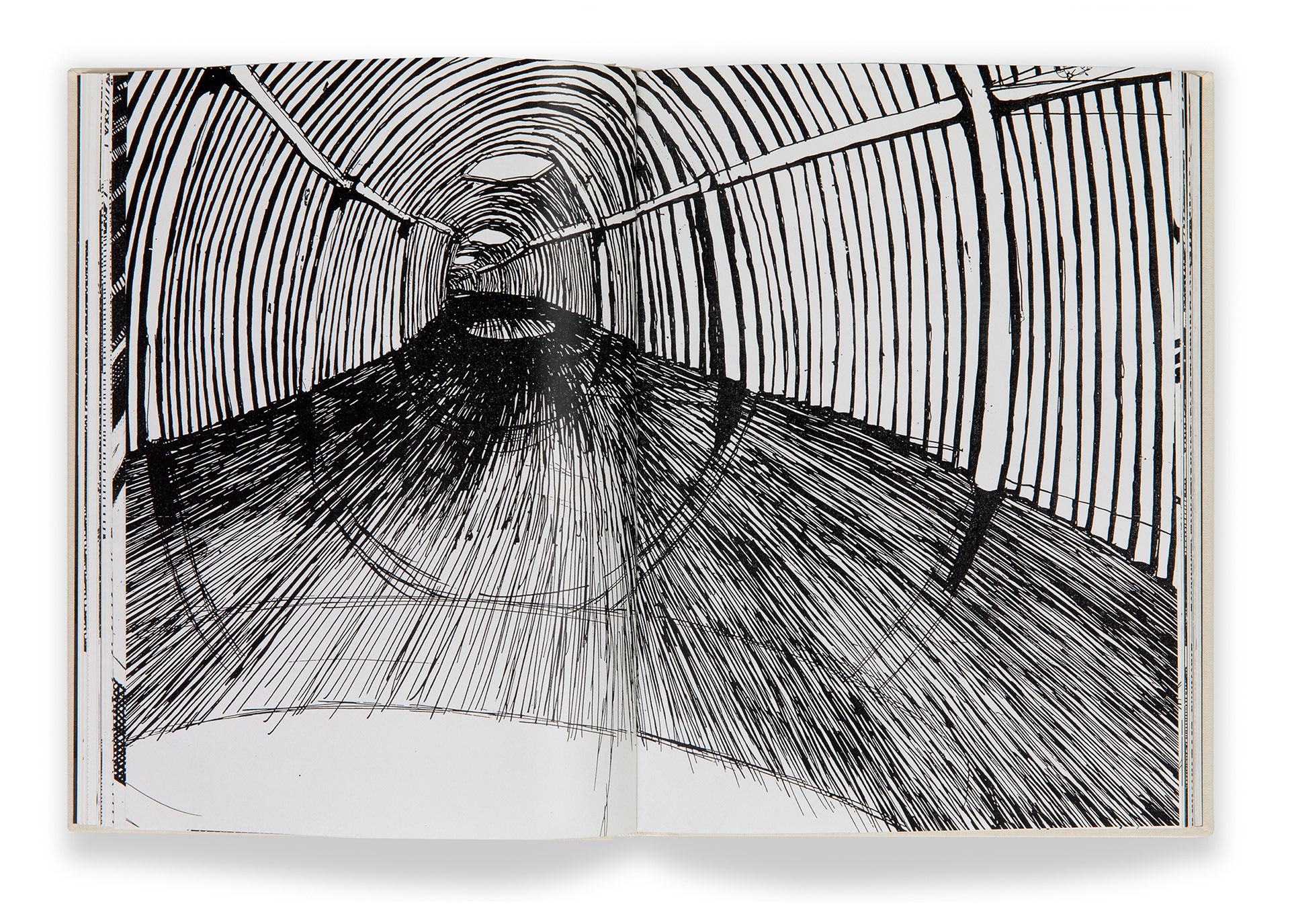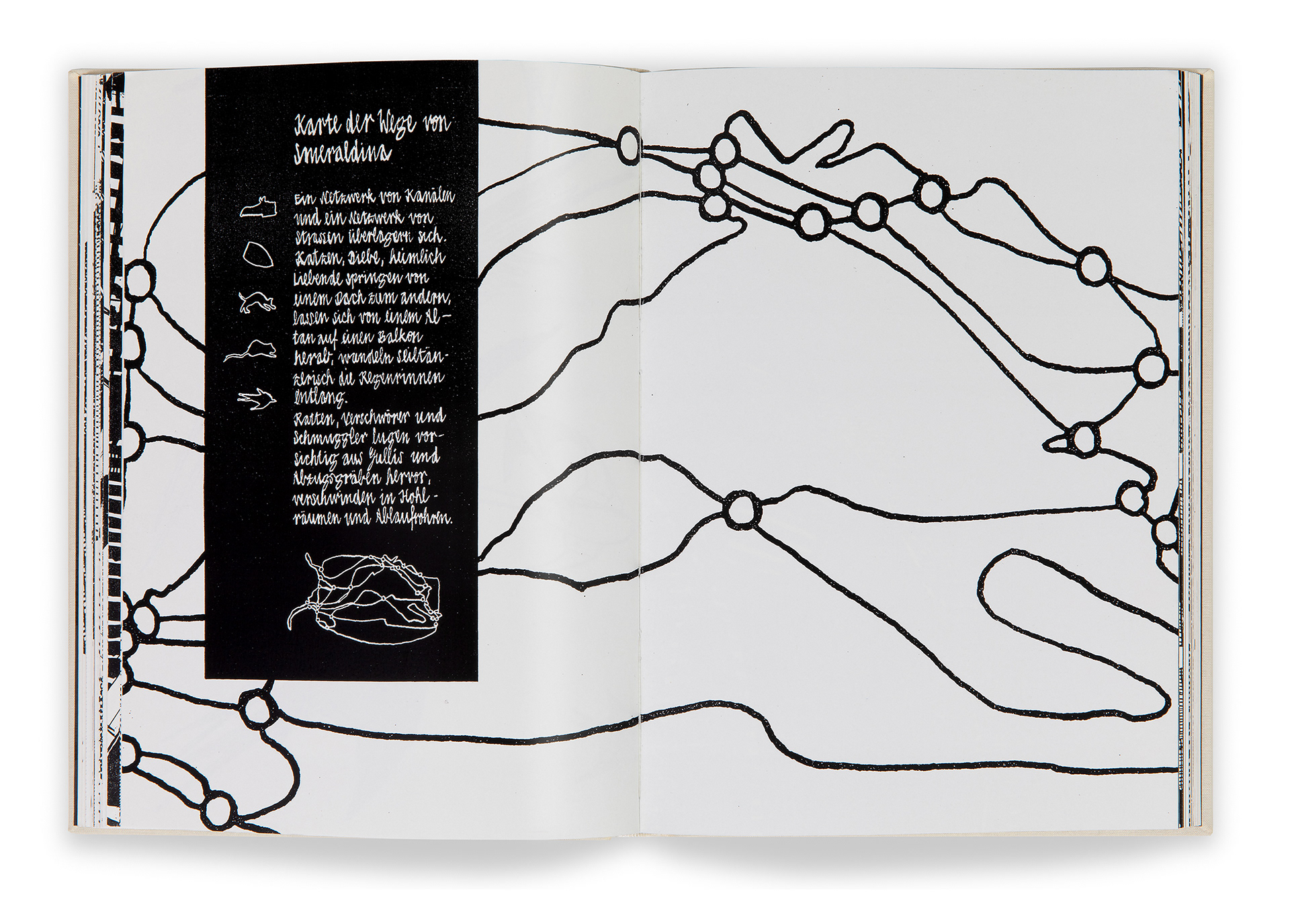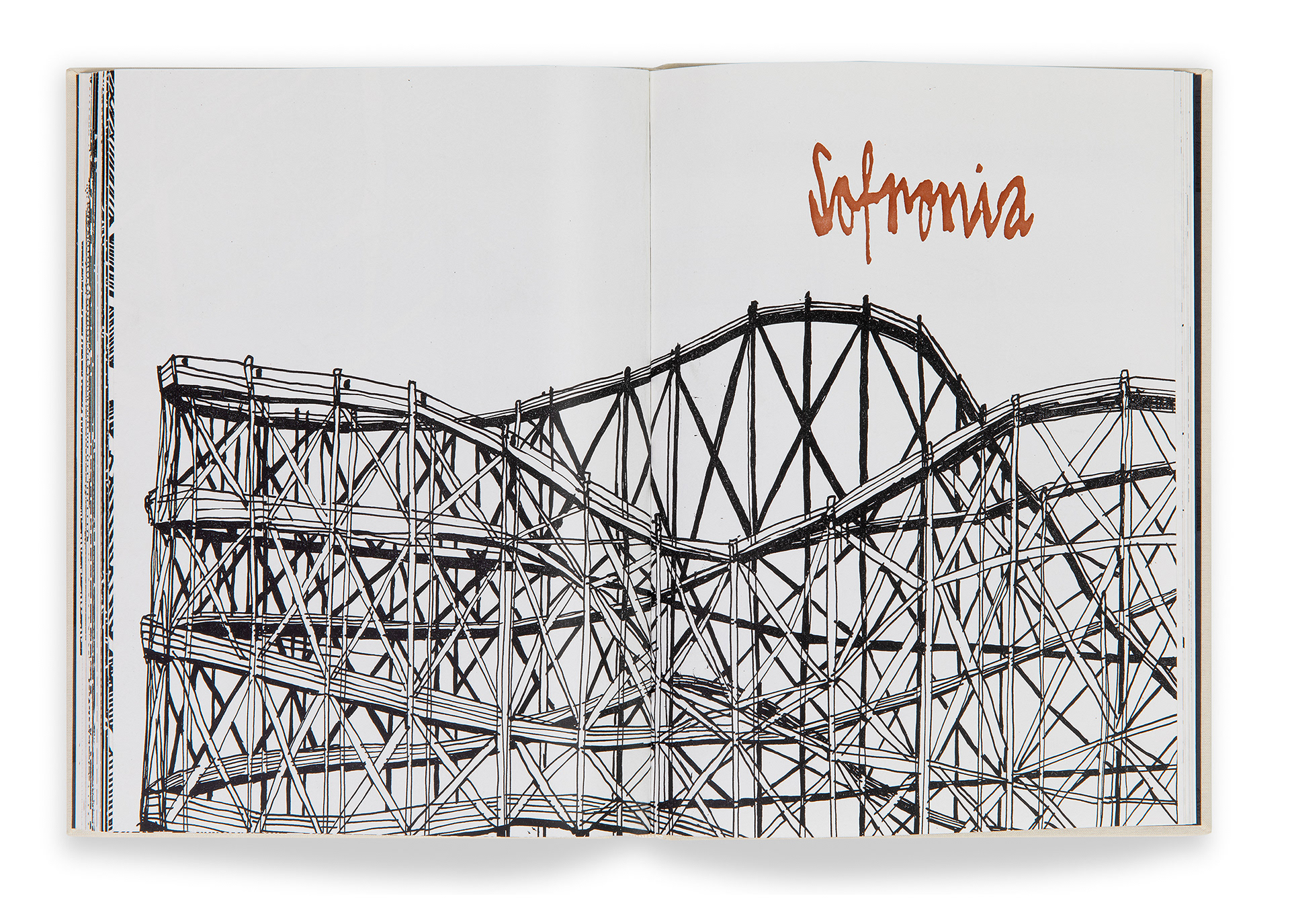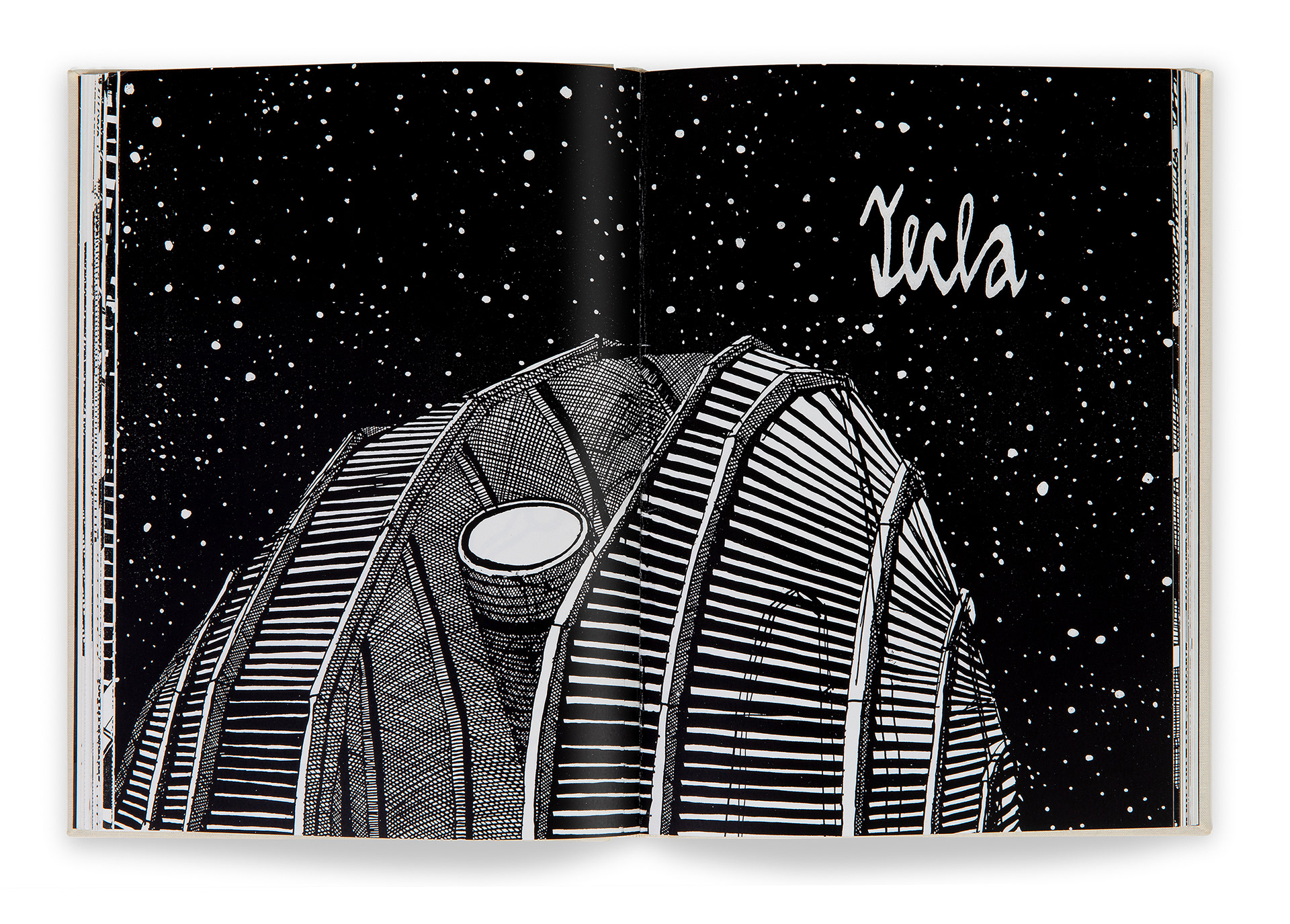»Die unsichtbaren Städte« Buchgestaltung und Illustration nach dem gleichnamigen Roman von Italo Calvino, ausgezeichnet von der Stiftung Buchkunst als eines der schönsten deutschen Bücher. Fadenheftung, Leineneinband mit Blindprägung, 136 durchgängig illustrierte Seiten
»Die unsichtbaren Städte« Book design and illustration based on the novel of the same name by Italo Calvino, awarded by the Stiftung Buchkunst as one of the most beautiful German books. Thread stitching, linen cover with blind embossing, 136 fully illustrated pages
»Städte wie Träume sind aus Wünschen und Ängsten gebaut, auch wenn der Faden ihrer Rede geheim ist, ihre Regeln absurd, ihre Perspektiven trügerisch und ein jedes Ding ein anderes verbirgt« Italo Calvino
»Cities, like dreams, are built of desires and fears, even if the thread of their speech is secret, their rules absurd, their perspectives deceptive and each thing conceals another« Italo Calvino
»In Smeraldina, der äquatischen Stadt, überlagern und überschneiden sich ein Netzwerk von Kanälen und ein Netzwerk von Straßen. Um von einer Stelle zur anderen zu kommen, hast du immer die Wahl zwischen dem Landweg und dem mit dem Boot...« Italo Calvino
»In Smeraldina, the aquatic city, a network of canals and a network of roads overlap and intersect. To get from one place to another, you always have the choice between traveling by land or by boat;...« Italo Calvino
»Die Stadt Sofronia ist aus zwei halben Städten zusammengesetzt. In der einen befinden sich die große Achterbahn mit den Steilkuppen, das fliegende Karussell, das Riesenrad, die Todesbahn mit den Motorradfahrern kopfüber, die Zirkuskuppel mit den Trapezgehängen in der Mitte. Die andere halbe Stadt ist aus Stein und Marmor und Zement...« Italo Calvino
»The city of Sofronia is made up of two half-cities. In one there is the large rollercoaster with the steep crests, the flying carousel, the Ferris wheel, the death ride with the motorcyclists upside down, the circus dome with the trapeze hangers in the centre. The other half of the city is made of stone and marble and cement...« Italo Calvino
»Kommt einer nach Tecla, so sieht er wenig von der Stadt [...]
Auf die Frage ›Warum dauert der Bau Teclas so lang‹ antworten sie und lassen dabei nicht ab, Eimer in die Höhe zu hieven, mit Senkbleien zu loten, mit langen Pinseln hinauf- und hinunterzufahren: ›Damit nicht die Zerstörung beginnt‹. Und gefragt, ob sie denn fürchten, daß die Stadt gleich nach der Abnahme der Gerüste zerfalle und in Stücke gehe, fügen sie rasch und leise hinzu: ›Nicht nur die Stadt‹.« Italo Calvino
»When someone comes to Tecla, he sees little of the city [...] When asked 'Why is the construction of Tecla taking so long', they answer: 'So that the destruction doesn't begin'. And when asked whether they fear that the city will crumble and fall to pieces as soon as the scaffolding is removed, they quickly and quietly add: 'Not just the city'.« Italo Calvino
»Was Calvinos klare, kühne Phantasiebilder vor uns auftürmen, ist eine Geschichte der Stadt als Ort menschlichen und unmenschlichen Handelns, die Verdichtung aller „möglichen Städte", der verwunschenen, verfluchten und wünschbaren zum Gleichnis von der Unteilbarkeit menschlicher Existenz. Italo Calvino, der immer Erzähler war, nie eine Zeile Lyrik schrieb, hat mit den unsichtbaren Städten" „eins" der schönsten, zugleich, phantasievollen und präzisen Poeme verfaßt, die ich kenne.«Natias Neutert, DIE ZEIT
»What Calvino's clear, bold fantasy images pile up before us is a history of the city as a place of human and inhuman action, the condensation of all "possible cities", the enchanted, cursed and desirable, into a parable of the indivisibility of human existence. Italo Calvino, who was always a storyteller and never wrote a line of poetry, has written "one" of the most beautiful, imaginative and precise poems I know in "Invisible Cities". «Natias Neutert, DIE ZEIT
















